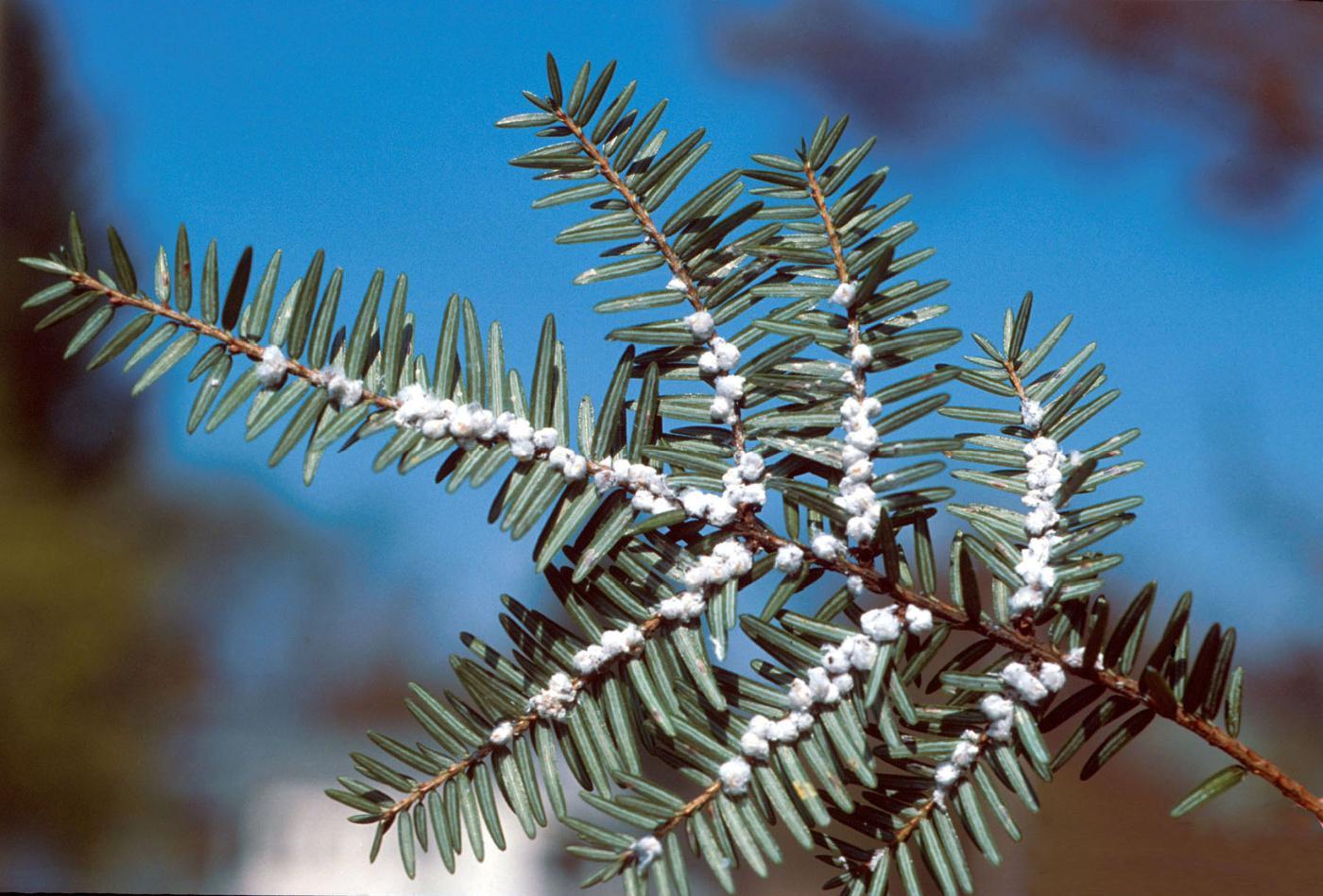This map defines the area closure surrounding the Old Indian Trail. The closure covers an area approximately 1 1/2 x 1 1/2 miles/NPS
A large of area of Sleeping Bear Dunes National Lakeshore in Michigan has been closed to the public to allow for treatment of an infestation of hemlock wooly adelgid.
The tiny insect can kill hemlock trees in as little as four years, according to park staff. The insects access the tree’s nutrients at the base of the needles, starving the tree. In the fall and winter, the adelgids cover themselves with a white, waxy coating for protection that appears as wool bundles the size of a pinhead at the base of hemlock needles. The insect was first introduced to the eastern United States on infested horticultural material in the mid-1950s.
The area closed includes the Old Indian Trail and surrounding area. Plans are in development to reopen the trail by fall.
Surveys this January and February found a large infestation on the southern boundary of the national lakeshore, along and around the area of the Old Indian Trail. The aphid-like insect has been moving north along the Lake Michigan coastline since 2015 and is known to be present in seven Michigan counties: Allegan, Benzie, Mason, Muskegon, Oceana, Ottawa, and Washtenaw. It spreads by wind, on wildlife, and via humans on clothing, vehicles, and by moving firewood.

The white puffs are evidence of hemlock woolly adelgid infestation/U.S. Forest Service
Since 2018, the national lakeshore has conducted annual winter monitoring surveys in hemlock groves throughout the park. A small infestation in a single tree was identified and treated in the Platte River Campground in 2022.
Those visiting the National Lakeshore — especially those coming from an area with known infestations — can help slow the spread by following these recommendations:
-
Obey closures, stay on trails, and treat clothes and hiking equipment by machine drying on high heat after a hike.
-
Do not park under low hanging branches and wash vehicles often when traveling between areas in the region.
-
Learn how to identify Eastern hemlock trees and hemlock woolly adelgid.
-
Report possible sightings to the national lakeshore staff or the Northwest Michigan Invasive Species Network.
-
Use the citizen science app MISIN (Midwest Invasive Species Network) to post location-specific photos of HWA.
Hemlock trees are common in Sleeping Bear Dunes and throughout the region. These trees provide food, shade, and cover for many species of birds and mammals. They are especially important during the spring before other plants have grown back their leaves. Eastern hemlock trees often grow around freshwater rivers and streams. In these areas, their shallow roots help to stabilize the soil and limit erosion. The shade also keeps water temperatures cool for animals like fish and aquatic invertebrates.





